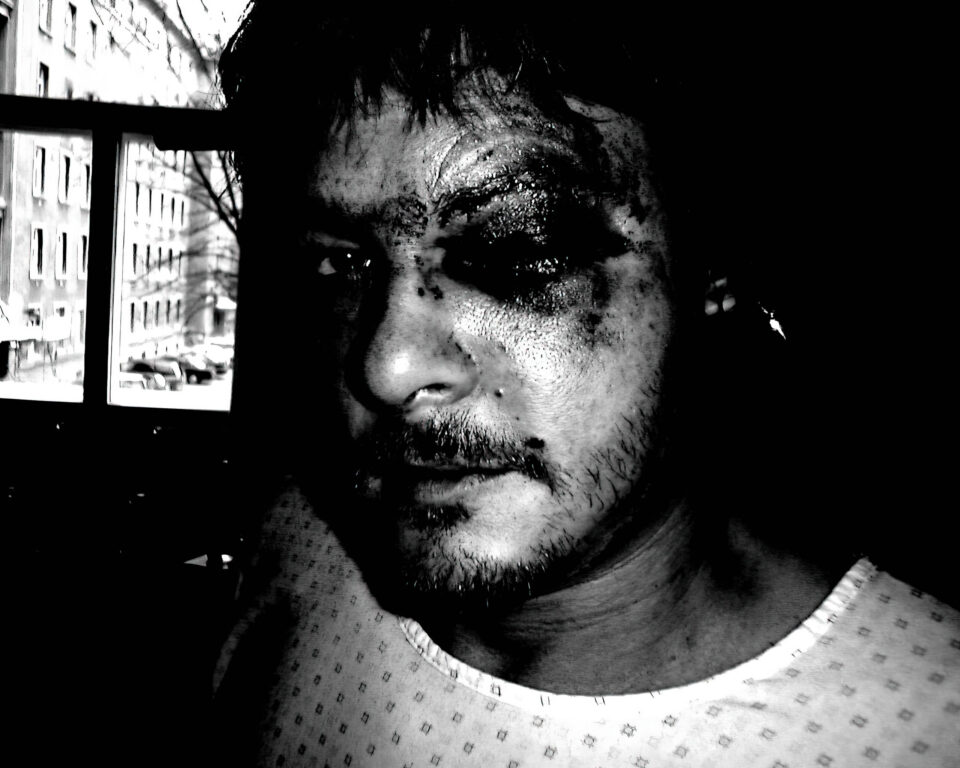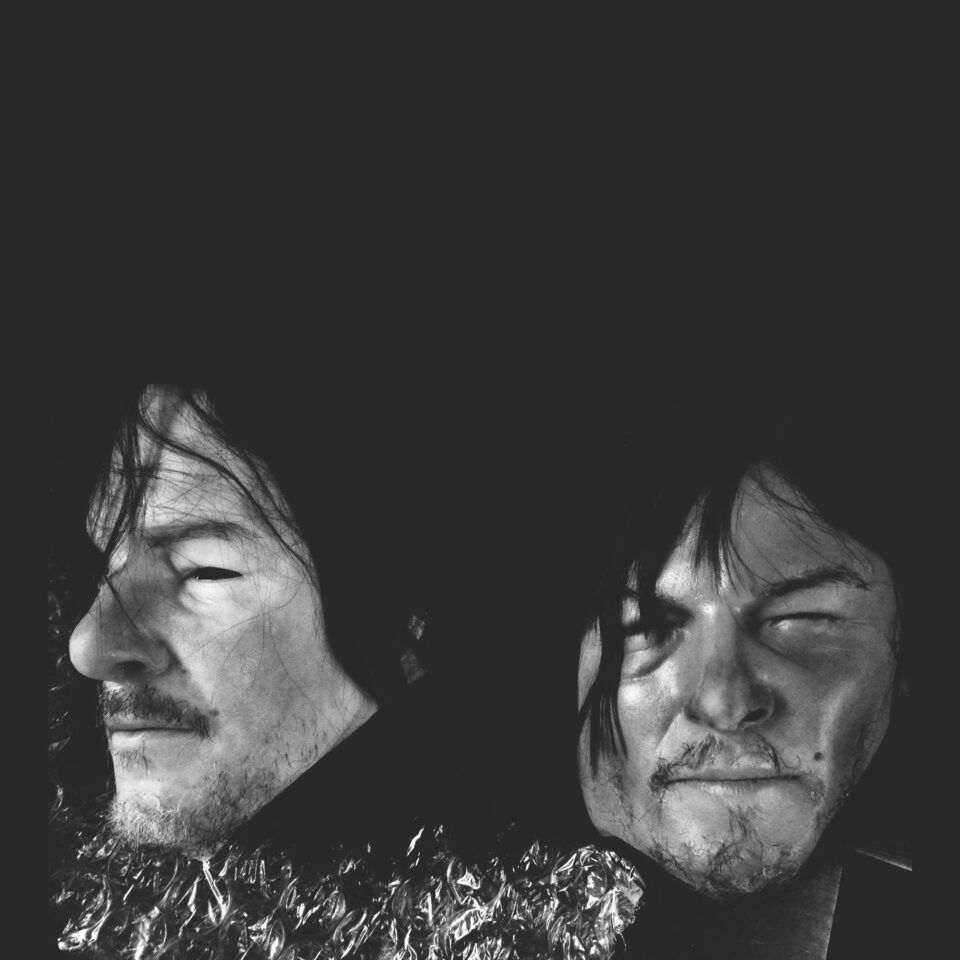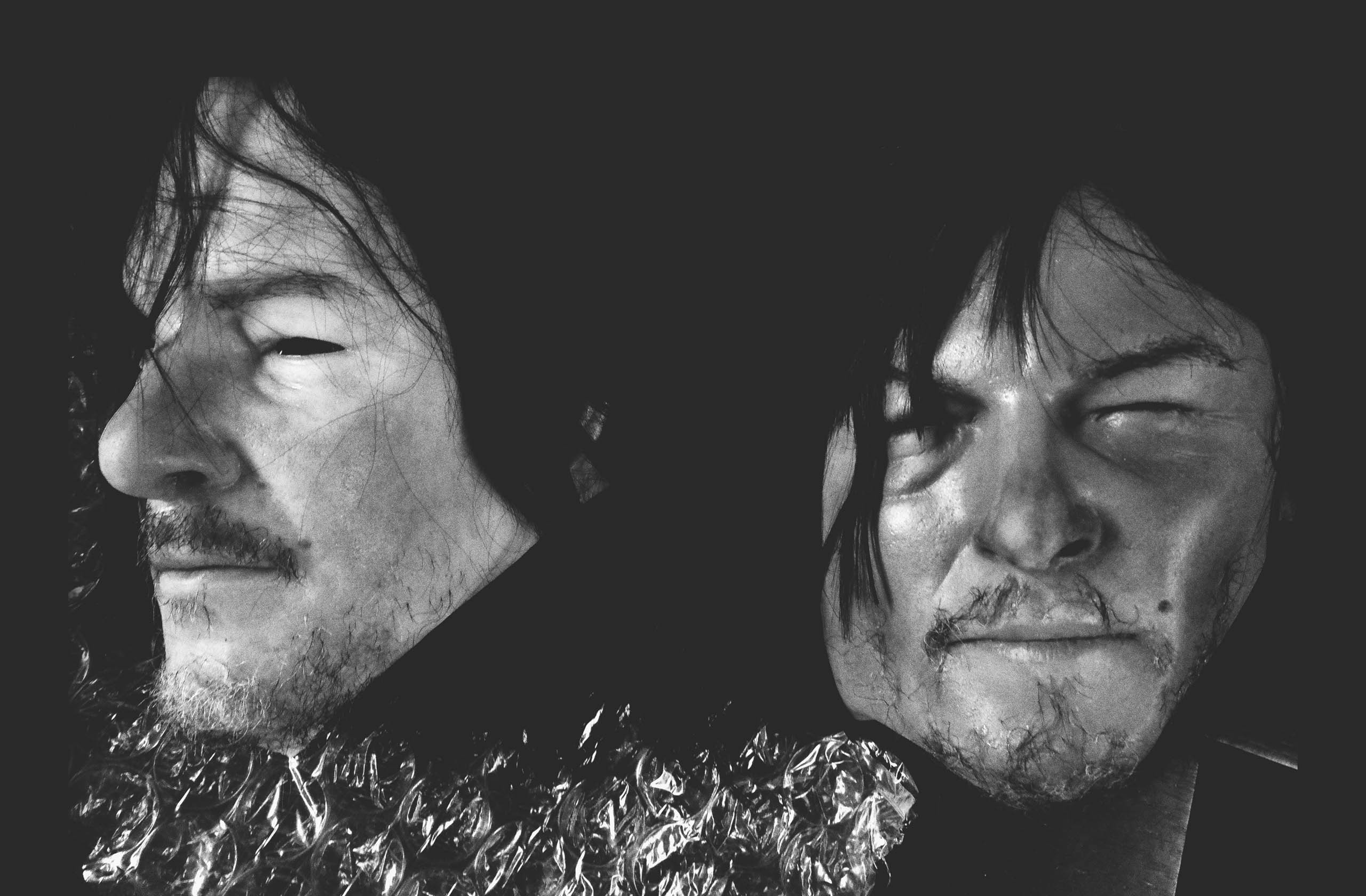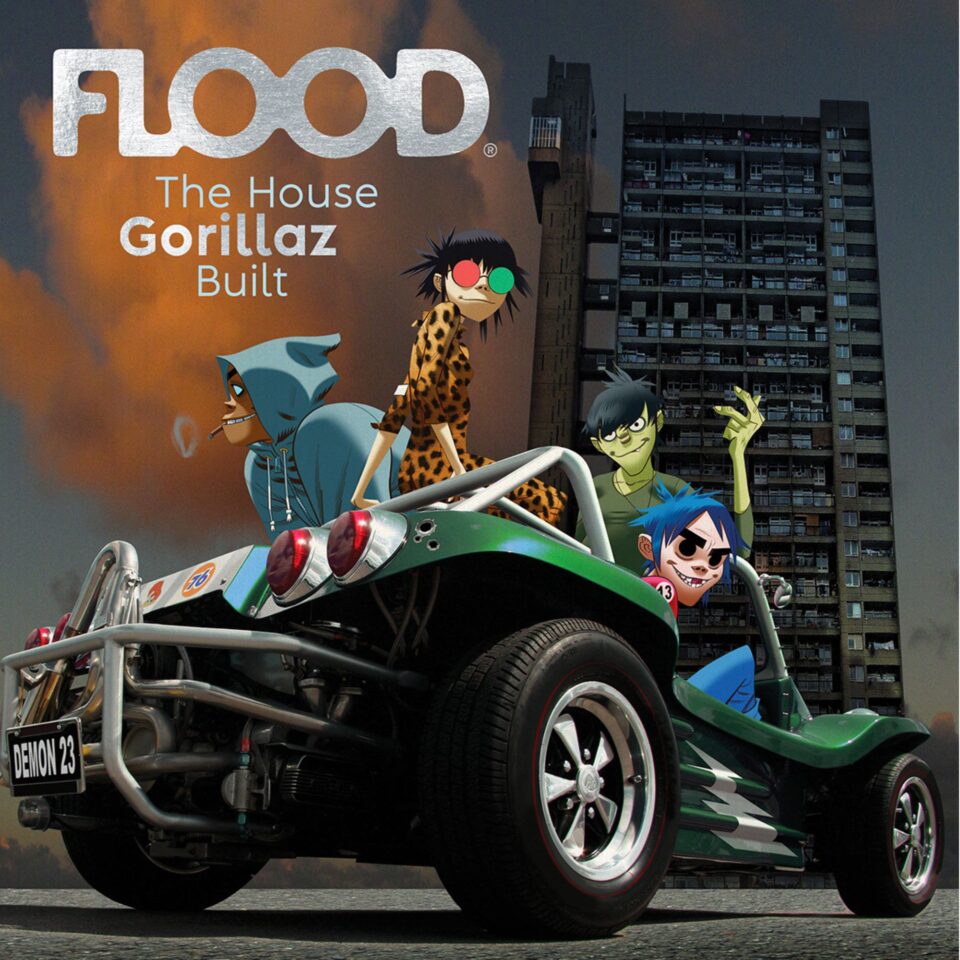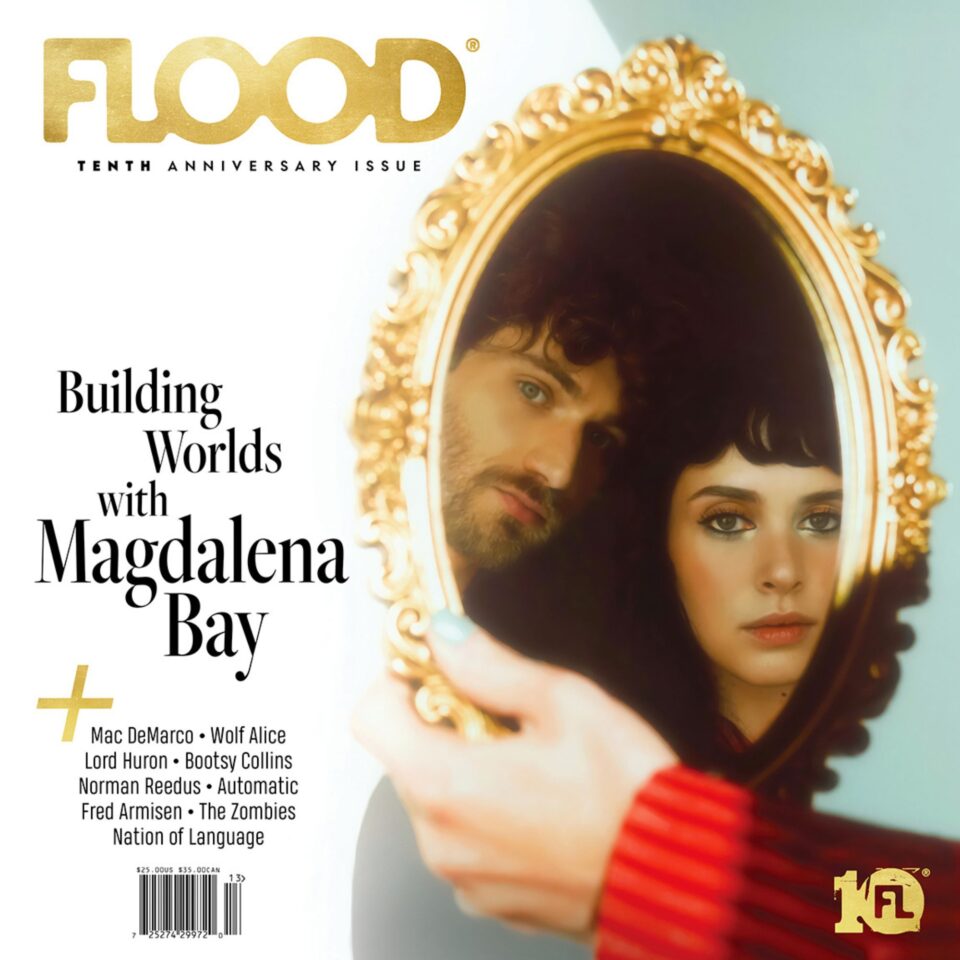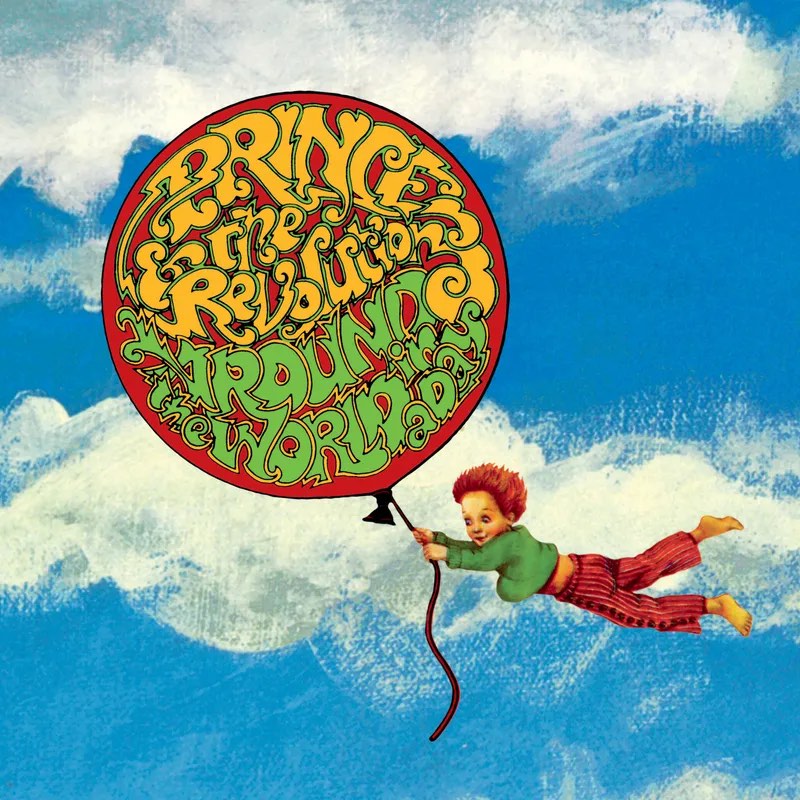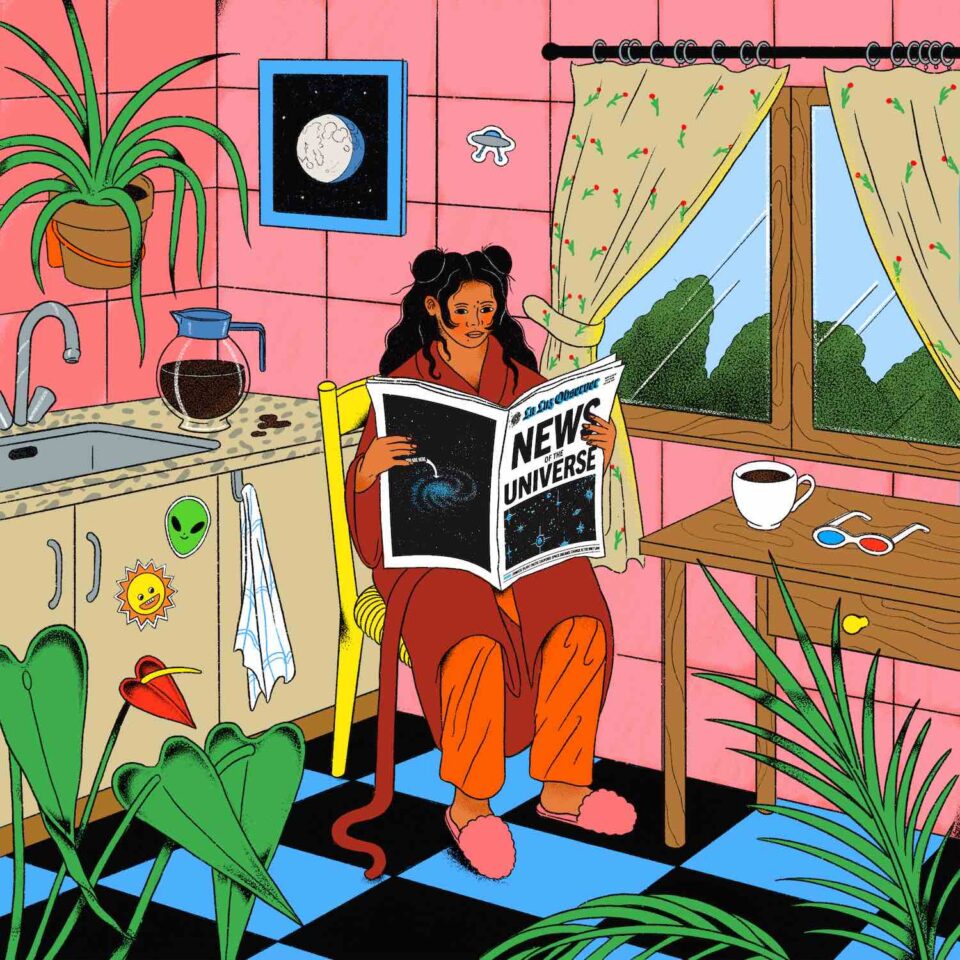“As time passes by and you look at portraits, the people come back to you like a silent echo,” said street photography pioneer Henri Cartier-Bresson. “A photograph is a vestige of a face, a face in transit.”
This constant movement of faces and places in time is what Norman Reedus captures in his third book of photography, In Transit. A photographic journal featuring images spanning from the ’90s to the present day, the book immortalizes these moments in time. “I’ve been traveling for so long,” Reedus tells me. “I’ve been away from home working for maybe 14 years, and I get to travel in between all of those days. So it was more of a feeling than it was a timeframe.” Following 2022’s The Final Season, an intimate look at the last days of shooting on The Walking Dead, In Transit is a more cohesive glimpse into Reedus’ life on the road throughout the years. “It was sort of a yearbook of my life. I was traveling through France and Spain for the last couple years, and I just wanted to make it a behind-the-scenes look at things.”
In Transit reveals the flaws in life, reminding artists and non-creatives alike that it’s those imperfections that are often the things most worth studying. Loneliness is depicted with nothing but an empty chair set up in the Basque region of San Sebastián, or in a French prison. Other shots span Berlin, Tokyo, and Rome, along with more personal glimpses of home in Upstate New York with “Diane Upstate,” featuring his partner Diane Kruger walking down a tree-lined snowy trail. New York City is also often explored from a unique angle—grittier, darker, and defined by inky late-night gazes into laundromats, silent streets filled with parked cars, and bodies moving in the night.
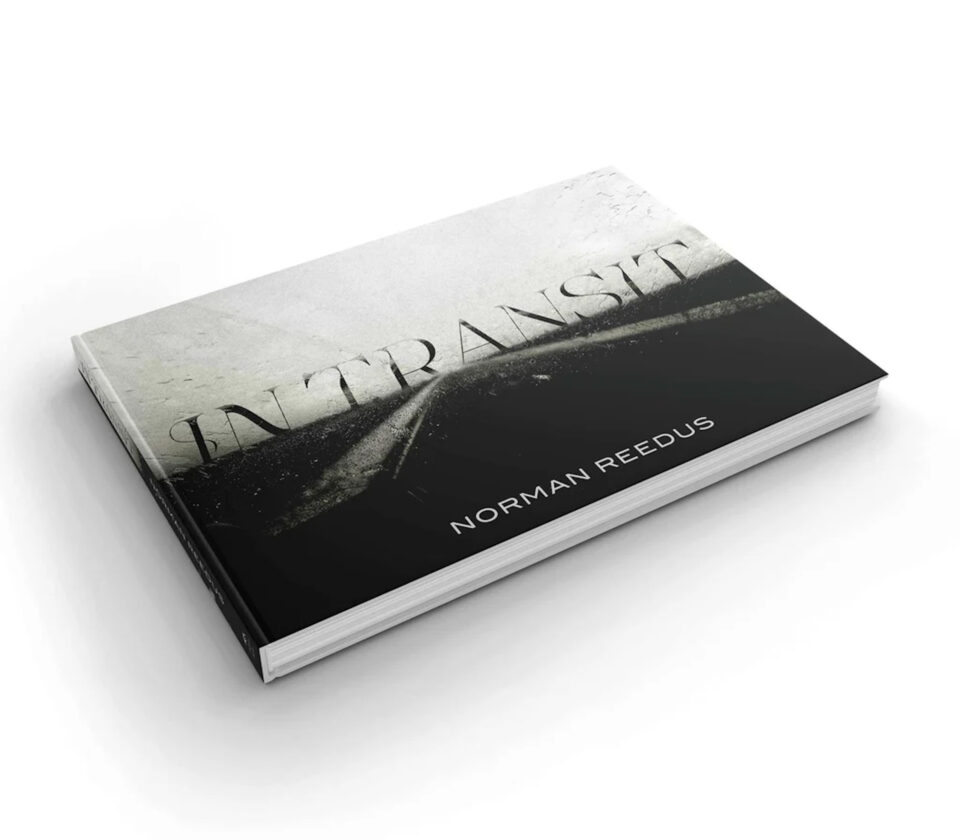
A portion of his book, along with other shots from his personal collection, are currently on display at the Soho Grand in NYC through May 18. The exhibit features some of his more cinematic work, too, including “Willowy Being”—a.k.a. actor Christopher Redman, shot on the set of John Carpenter’s 2005 Masters of Horror episode “Cigarette Burns”—and images taken on the set of the 2007 Russian thriller Moscow Chill. Also included are photos of Reedus’ Walking Dead castmates upon learning that the show’s eleventh season would be the series’ last. “You could feel the sadness, how everyone’s gonna miss everybody,” Reedus shares. “There were a lot of tears that day, and of course I’m the asshole putting cameras in people’s faces.”
While on location in Georgia filming the third season of The Walking Dead: Daryl Dixon, and in between shooting his AMC series Ride with Norman Reedus, the actor and photographer reflected on some of the images in the book and why he’ll forever be in transit.
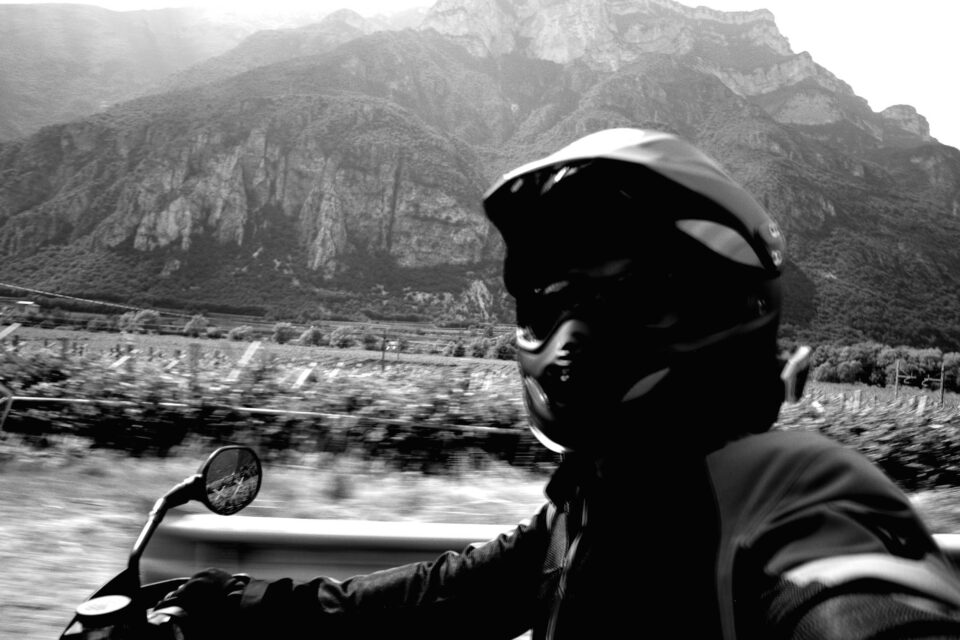
Italy In Transit
There’s something exploratory about your photos, almost like a local looking in as a stranger. In that sense, these photos are even more personal to you.
I usually walk around with a camera on my neck or in my pocket, depending what camera it is. I’m a big fan of photographers who set up images like Joel-Peter Witkin, Cindy Sherman, and Dennis Hopper. I tend to look at things that give me pause—maybe I’ll see something in it that nobody will ever see. And that’s fine, too. I take a lot of photos of shapes and patterns and stones and architecture where I see something. I’m like, “Oh, look at that face looking at me," and nobody else ever sees it.
Who are some of your other inspirations in photography?
You can see some of my inspiration sometimes by accident—a Roger Ballen type of jam going on when I didn’t really intend it. I spend a lot of time looking at his photos, lost in his world. I think it just sort of influences you. Mary Ellen Mark is another one of those people. I remember when I was a kid, I used to stare at Pink Floyd’s The Wall album for hours and I’d go into the imaginary worlds of those animations. My mom used to blast that album really loud, and I’d be in the corner looking at it. I’m still doing that, I think.
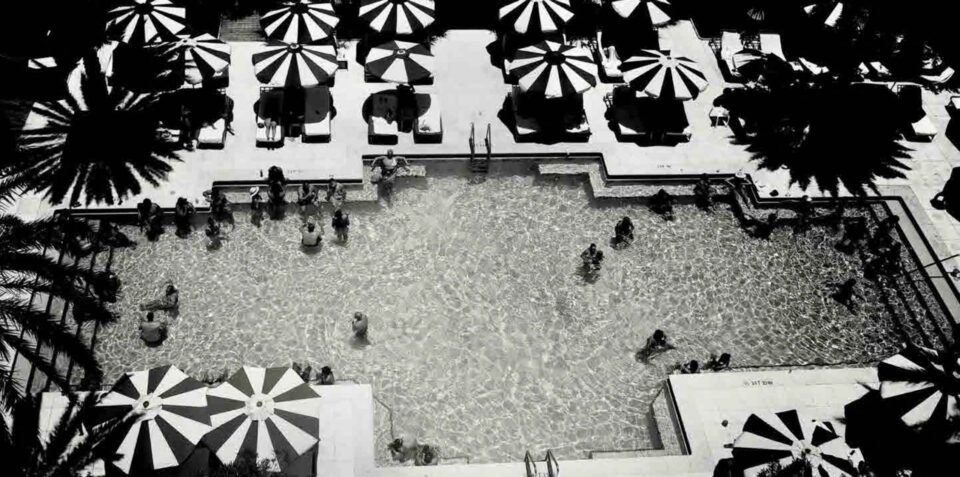
Vacation
“I tend to look at things that give me pause—maybe I’ll see something in it that nobody will ever see. And that’s fine, too.”
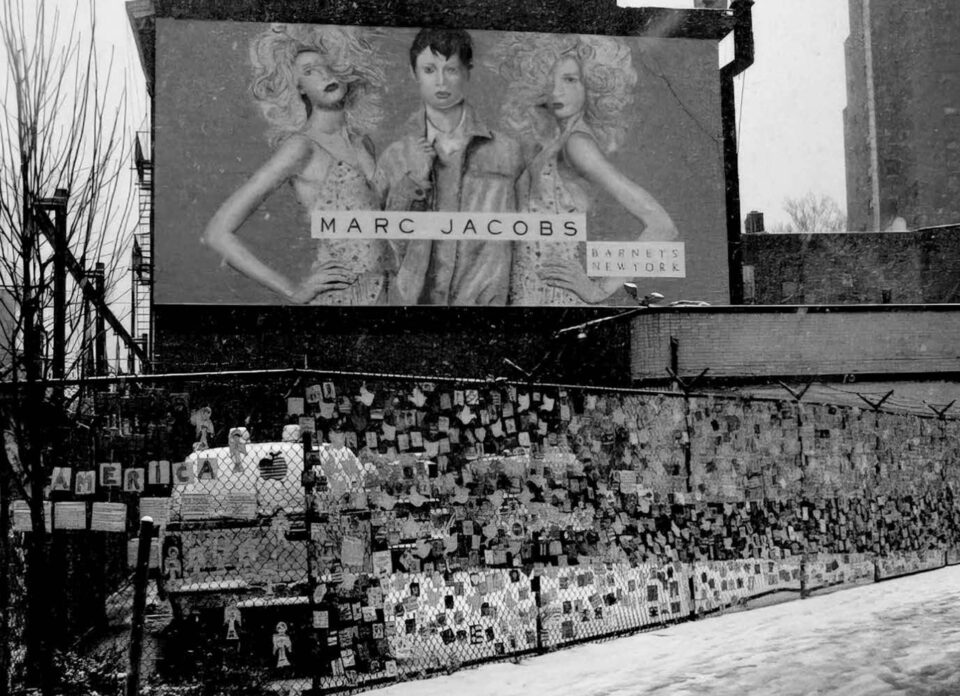
911 Missing Persons
Is it difficult trying to explain the images you’ve taken?
The worst part is trying to explain it. That’s no fun. I hate when people tell me I’m an artist. I’m like “Yeah, whatever.” It’s really hard, because some of it is just so pretentious when you explain things. The whole point of all of it, for me anyways, is to see it through my eyes.
What does the title In Transit mean?
It’s just me traveling, observing things. People kept telling me, “You make really grotesque things beautiful,” and I was like, “Do I?” I did a series of short films that I directed, shot, and edited, and they said the same thing, so I guess it’s my thing. [With] In Transit, you’re in movement, and it’s from here to there. And there’s no real set destination, either. I’m horrible at schedules. I’m horrible at planning. It’s been that way through my career, through everything. J-Lo’s driven. I’m not really driven. I just kind of keep moving.
Sometimes there are those once-in-a-lifetime shots. What were some of those for you?
One of the photos that people present the most is one in a maximum-security prison of these two guards leaning around a kitchen. I was filming in Moscow, and I had a lot of carte blanche there, so we got to go to places that maybe people don’t usually get to go to. We were four floors underground, and while we were filming, these two cooks in the kitchen who were prisoners kept peeking around the corner. And this guy would yell at them, and they’d go back behind the corner. When the guard left, I whistled that I had the camera ready and they came around the corner, sort of like supermodels. And then this little kitten ran out amongst cigarette butts from behind the wall. It’s such a great color of green—the kind of green you can only get with time, just faded and repainted. It was on film, and I was excited to see what it was gonna look like. It came out great—it was better than I even expected.
There’s also a photo of a bloody girl sitting on a sofa when I was doing a John Carpenter film. I like his [Carpenter’s] tone, and I like him as a person. He’s such a great guy. That was fun because that had a lot of sneaky stuff to it. The guys that took care of my trailer on the set were really pissed because I covered the room in blood, but that was fun.
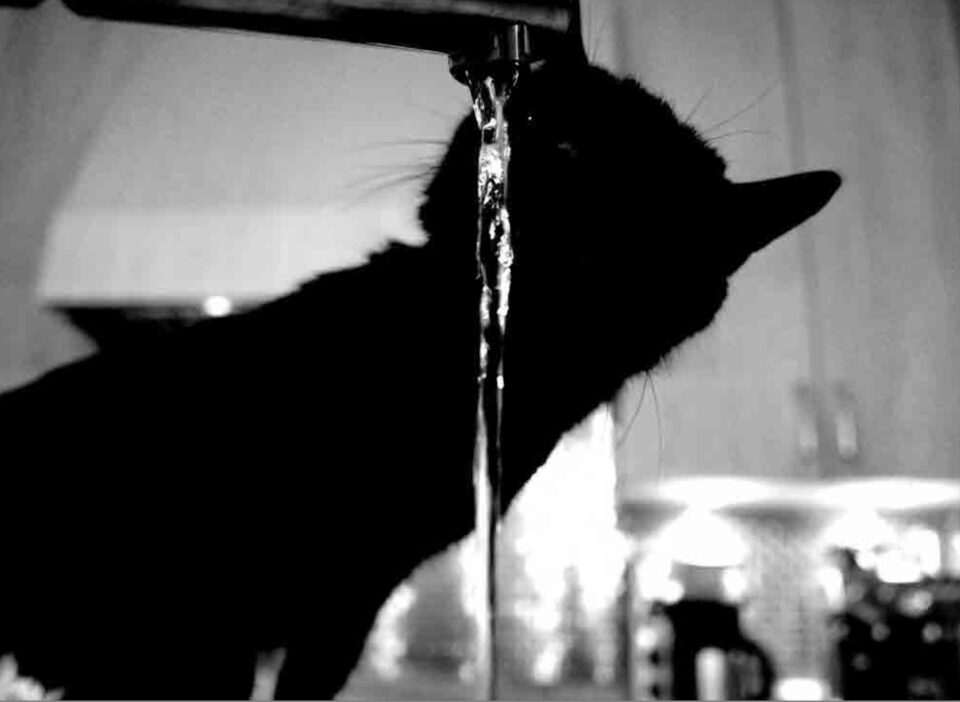
Eye in the Dark
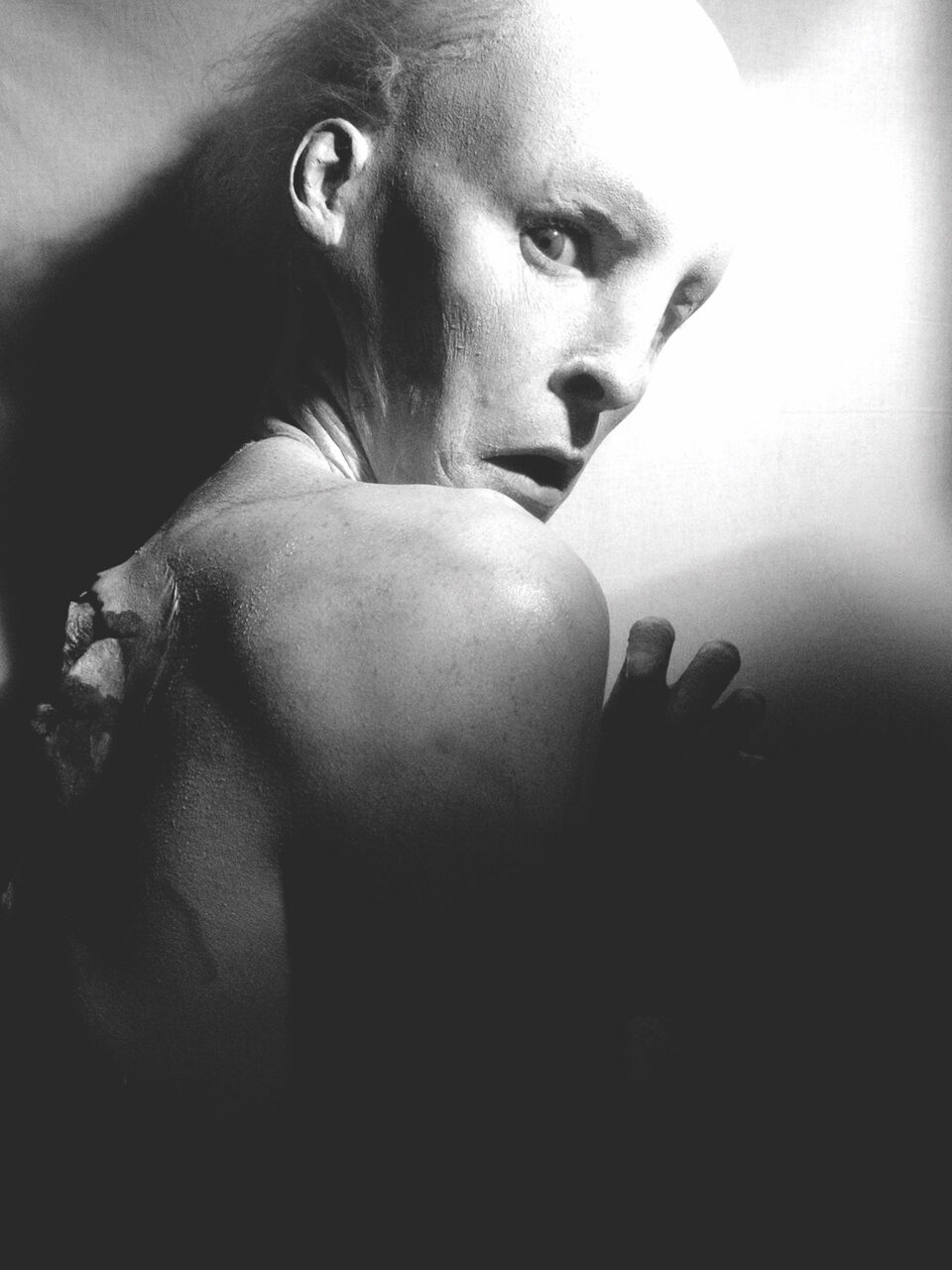
Willowy Being 1
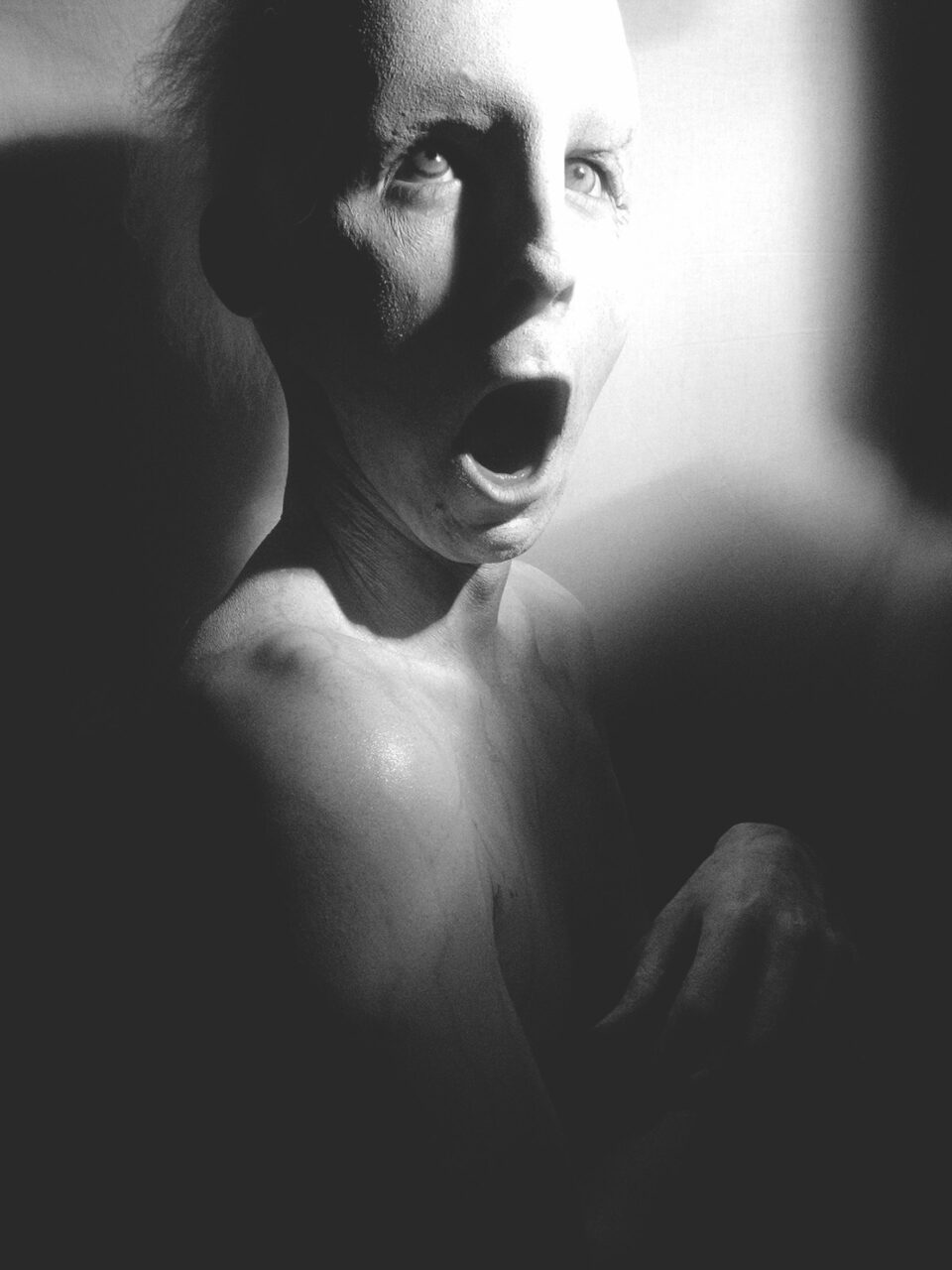
Willowy Being 2
“Some of it is just so pretentious when you explain things. The whole point of all of it, for me anyways, is to see it through my eyes.”
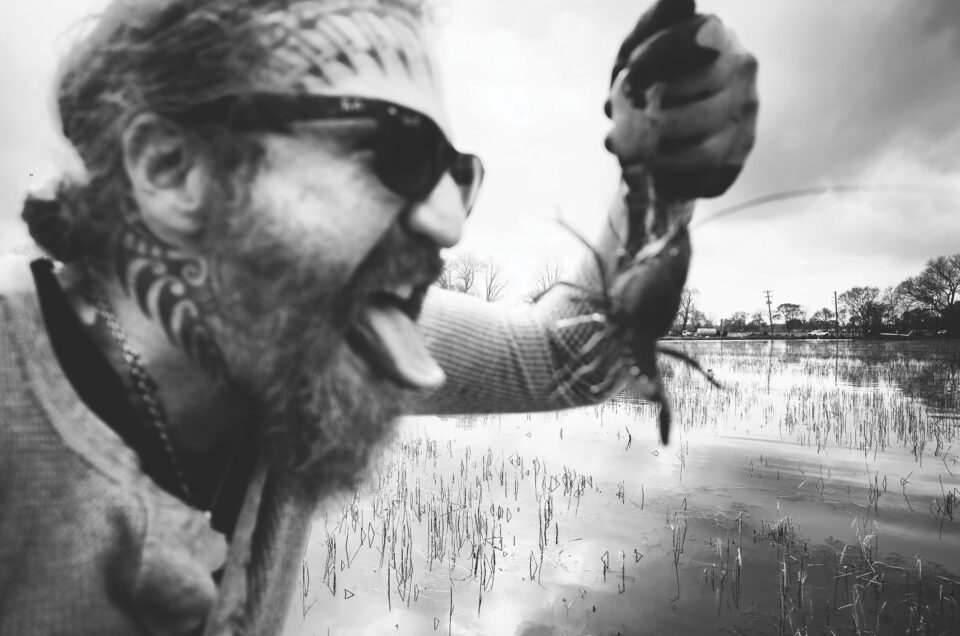
Brent #2
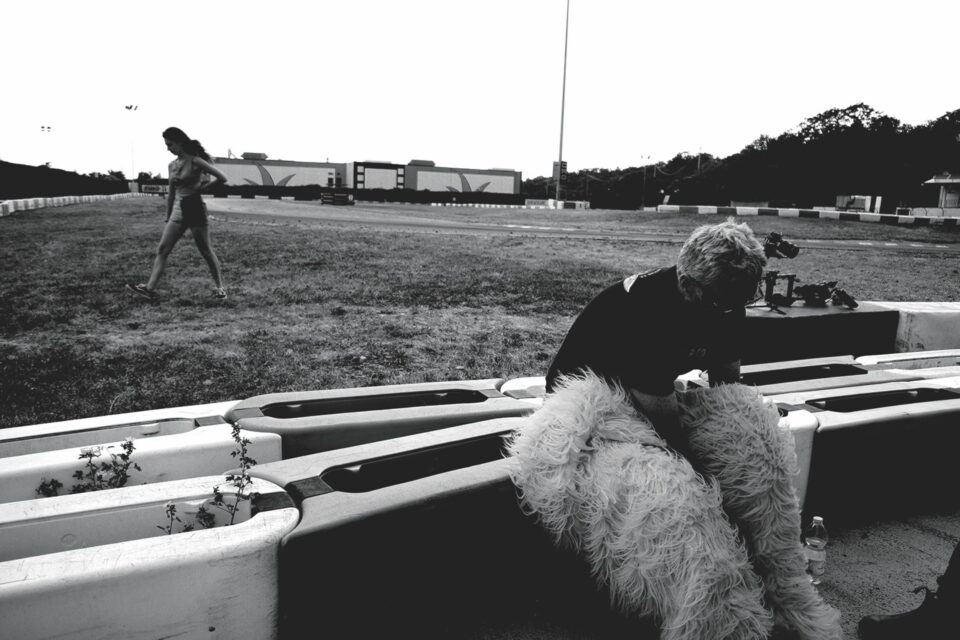
Chicken Race #2
In your image “Chicken Race” there’s a race track and a man wearing chicken pants. What’s happening here?
We were racing tuk-tuks around the track and I put a chicken suit on this guy, Gregg Smrz, who’s actually Tom Cruise’s stunt man. I couldn’t tell if he was having fun or not.
What’s your camera of choice?
I gravitate toward cameras that feel good more than what they can do. I’m kind of a lo-fi guy. I have a Leica Monochrom and love that camera. Anything that I can’t just whip out of my pocket or have wrapped around my neck at all times—I end up going back to those cameras. I always go back to lo-fi cameras like a Holga or Lomo. Then there’s a Ricoh GR III that I really like. When I was starting to get into photography, I had the first generation of that Ricoh camera, and I was hanging out of a helicopter landing on an inactive volcano in Ethiopia trying to capture these animals that were running by. And the blades of the helicopter were so big that so much dust flew in my face that the camera froze forever. They reissued that camera a couple years later, and I jumped on it. The reason I like that camera is because the grip is so good. It feels like you’ve got a gun or something.
I asked a friend of mine when I was trying to learn how to play bass which bass to get and he said to get the one that feels the best in your hands, because you’ll fuck around with it more. So I’ve adopted that [mindset] with cameras. When I find a new camera, I’ll run around with that for a month. But the Ricoh is my go-to.
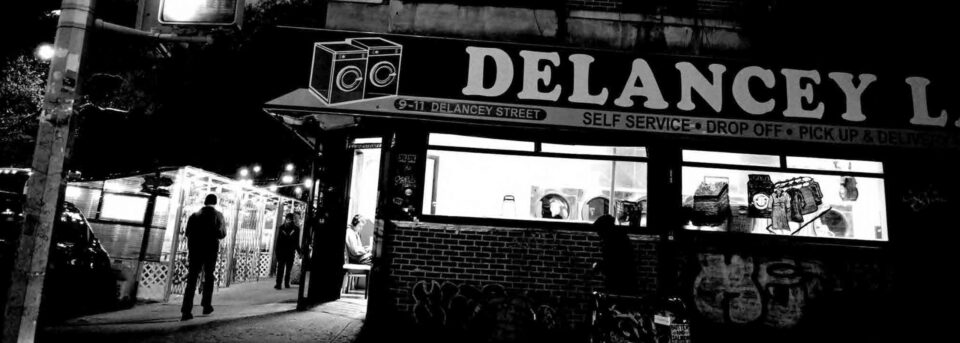
Delancey
“J-Lo’s driven. I’m not really driven. I just kind of keep moving.”
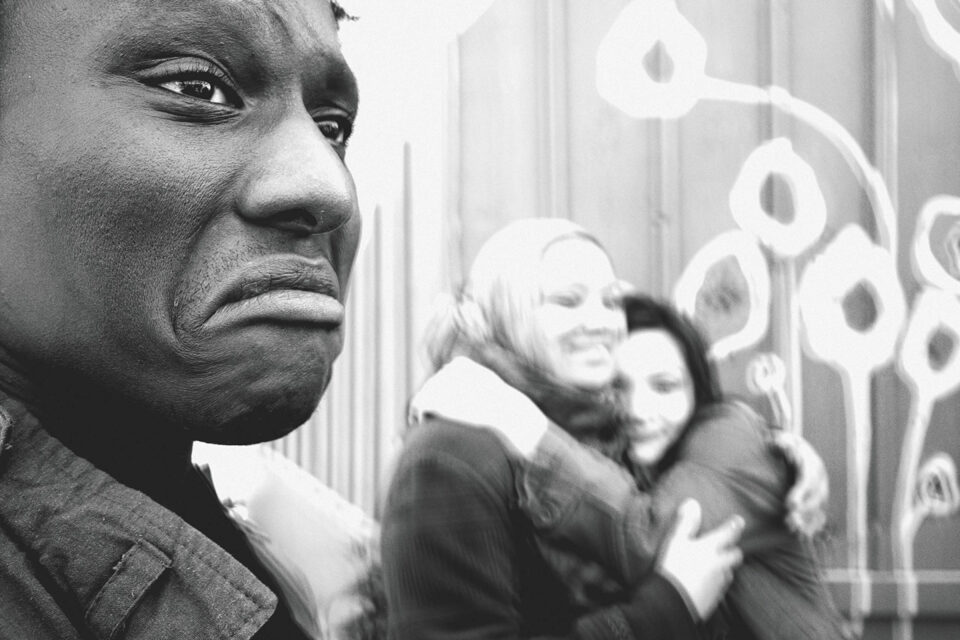
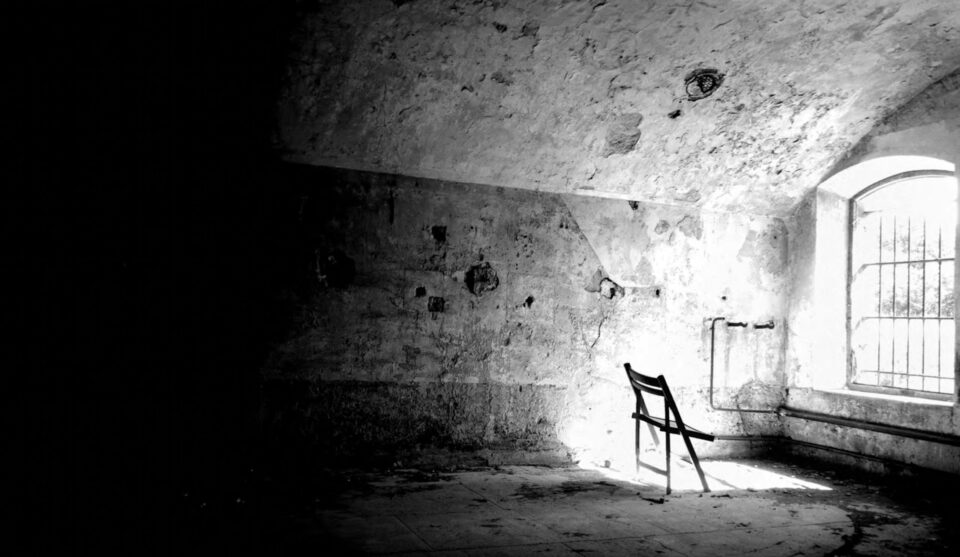
French Prison
Do you prefer black-and-white over color?
With the theme of this show, and In Transit, it’s all memories, and there’s a timeless quality to black-and-white. It makes it a little more like a moment in time.
So many of your photographs are set in New York City during dark and often snowy nights.
I used to go out at night in New York, and I’d always have this big plastic duct tape camera around my neck, and I’d sometimes be walking home in the snow. It’s the big exhale on the way home: “Oh shit, what happened tonight? What do we all have to apologize for tomorrow?”
After all these years of shooting, how do you feel your perception has evolved?
I’ve put myself in situations as a photographer that I was probably not qualified to be in, and I made it work. I had this set up in my apartment in Chinatown where I learned how to edit, doing these short films. Then we had Collective Hardware, which was an art space I ran with some friends. We had this factory of people, all putting our heads together. Sometimes we could barely make it through a job, but it was creatively fantastic. We weren’t pros or anything. We weren’t trying to be successful directors or photographers. We were just making stuff, and we had that mindset going into some of these real jobs.
As a photographer, I can pull things off if they’re thrown at me. That’s how I started with all this, anyway. I kind of got thrown into situations with people that were more qualified than me, and I was just having fun and doing my thing. I’m still just doing my thing. FL
